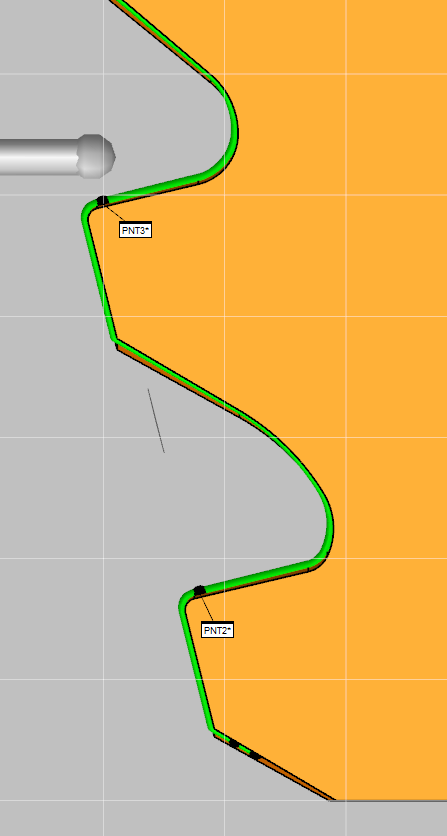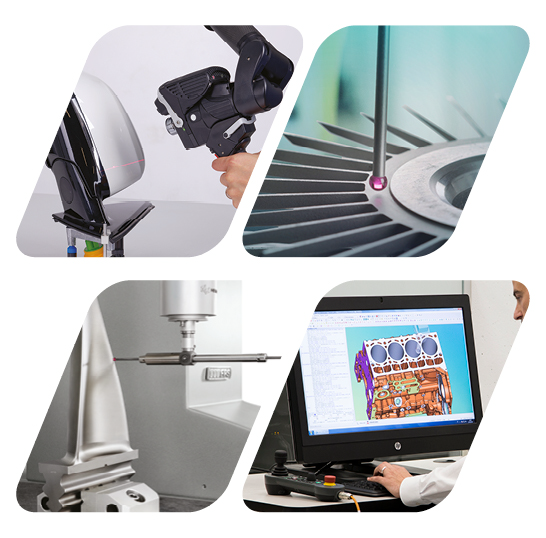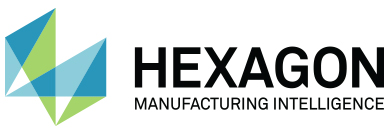Hexagon Measurement SystemsNo matter what Hexagon measurement equipment or software you use, we want to hear your ideas and suggestions on how we can improve.
Thanks for your assistance in helping us shape the future. |
|

 Intervention limit for selected nominal dimension comparisons
Intervention limit for selected nominal dimension comparisons
Required: Define a separate action limit for each individual characteristic in the measuring program.
e.g: Characteristic 1 --> intervention limit 85%
Characteristic 2--> no intervention limit
Characteristic 3--> intervention limit 70%
Eingriffsgrenze für ausgewählte Nennmaßvergleiche
Es ist nur möglich eine Eingriffsgrenzen zu definieren (z.B. 80% oder 90%), die dann für alle Merkmale im Messprogramm wirksam ist.
Wunsch: Für jedes einzelne Merkmal im Messprogramm eine seperate Eingriffsgrenze definieren.
z.B.: Merkmal 1 --> Eingriffsgrenze 85%
Merkmal 2--> keine Eingriffsgrenze
Merkmal 3--> Eingriffsgrenze 70%

 "Right click delete" to remove an unwanted Windows Layout icon
"Right click delete" to remove an unwanted Windows Layout icon
Deleting an unwanted Windows Layout icon should be more intuitive.
A user should be able to simply right click and choose "delete" in a context menu to remove, not Shift-Left Mouse Click and drag away. I'd also like to be able to rearrange the order the icons appear in the toolbar.

 Intersection points between curve and plane
Intersection points between curve and plane
At the moment when you construct an intersection point between plane and curve only the first intersection point (PNT1) will be construct. (see Picture 1)

We are needed every intersection point between curve and plane (PNT2 and PNT3). (see Picture 2)


 Collision Detection Speed Slide Adjustment Bar During Simulation
Collision Detection Speed Slide Adjustment Bar During Simulation

 Default feature color
Default feature color
I'd like to suggest a feature - to add an option to set the default colors for different types of features - i.e. by default every time i create a constructed feature its color on the cad model to be yellow and every time i create an auto feature its color to be red etc.
I am asking for this feature because atm whenever i start a new program or open an existing one by default all features are black and even if i set it manually the way i want it every feature i add to the program after i have set my colors is shown in black no matter where in the program i add the feature.
Also id like to suggest a global option for adjusting the features' colors for all programs because i would really like to avoid setting the colors for 1300+ programs manually one by one.
IMPO this would be extremely convenient if such an option is added to PC DMIS.

 Warning message reminder to save Program
Warning message reminder to save Program
Add a setting in the Setup Options for a save reminder. If a program is opened for a while, you will receive an warning message reminding you to save.

 QuickMeasure toolbar, make new sub icon menu
QuickMeasure toolbar, make new sub icon menu
These openable icons are very useful. The new ones have been added, which is good. But I want to be able to create myself.
In this way;
- I get rid of the clutter.
- I gained from the area.
- I can make my own arrangements.

 Update scan surfaces to new model
Update scan surfaces to new model
I want an easy way to be able to bring in a new model and tell PC-DMIS to equate the surface relation of previously created scans to the new model without having to go through each scan and deselect and reselect surfaces. For example, a model revision.

 Actual value data point - file saving
Actual value data point - file saving
Need to retain the actual data points on every measurement piece, after finishing the CNC run. This actual point data per piece will be useful for re-evaluate the dimension without actual part needed.

 Modular Window Setup - PC-DMIS Layout
Modular Window Setup - PC-DMIS Layout
Hey everyone,
I didn't find anything listed about this so I figured I would put it up. I use 2-3 monitors at a time when using PC-DMIS. I would like the ability to be able to place different parts of PC-DMIS on different monitors when programming and working.
Examples would be:
-Live view on separate monitor
-Report Window on separate monitor
-Edit Window on separate monitor
-CAD View on separate monitor
-Measurement tools in your own locations
-The ability to have that layout, the size and locations of windows saved for when PC-DMIS is opened next.
Essentially a user could make their PC-DMIS interface setup how they want it when using it whether they use 1,2 or 3 monitors, they could utilize all of them if given the chance.
This sounds like it would be a hard task to change this, but I know it would make a lot of users happy. I think it would be an opportunity to keep some things loaded separately though when loading PC-DMIS and fix certain crashes when too many things are open that are not in use. This would allow users to have only the tools needed for their job open while efficiently switching from task to task and checking their work at the same time without having to find an open window somewhere while utilizing more desktop space for users who like to see more at once.
Сервис поддержки клиентов работает на платформе UserEcho


